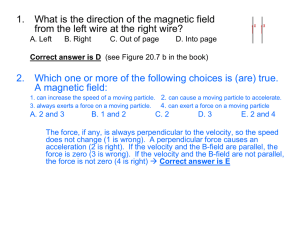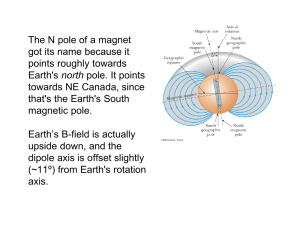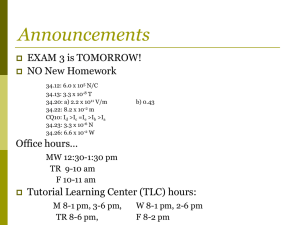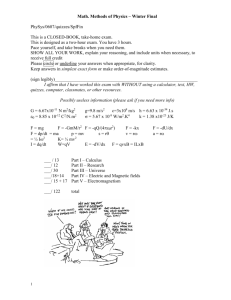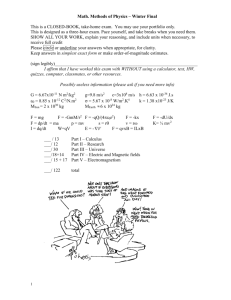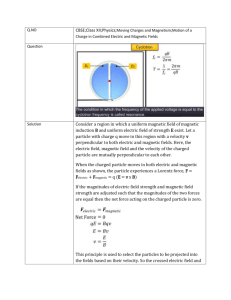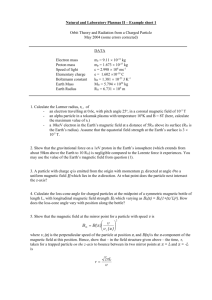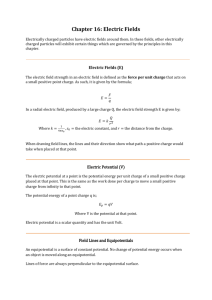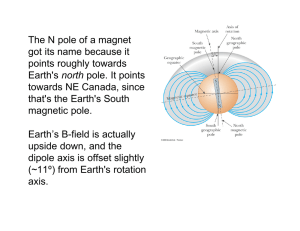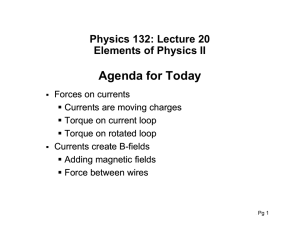The Magnetic Force and the Third Left Hand Rule
advertisement
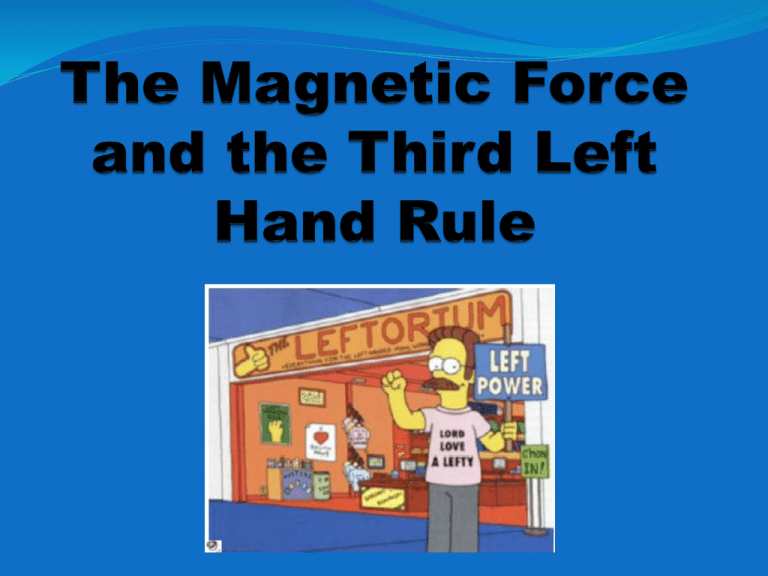
Objectives explain, qualitatively and quantitatively, how a uniform magnetic field affects a moving electric charge, using the relationships among charge, motion, field direction and strength, when motion and field directions are mutually perpendicular. predict, using appropriate hand rules, the relative directions of motion, force and field in electromagnetic interactions. Diploma Question Alert! Diploma Question Alert! Diploma Question Alert! Diploma Question Alert! Field Theory any object with mass produces a gravitational field the force of gravity acts in the same direction as the G-field any object with charge produces an electric field the force of electricity acts in the same direction as the E-field any magnet/current carrying wire produces a magnetic field what direction does the magnetic force work in? FM - Third Left Hand Rule The FM acts perpendicularly to the current and the B- field This direction can be found using the 3rd Left Hand Rule: ** Note you can also just use your palm as the direction of the force (while extending your fingers straight to represent the field)! Example Example What is the direction of the current? Applications of FM Effects on Charged Particles: recall that current carrying wires produce a B-field these wires simply carry moving electrons any other moving electron produces a B-field, which can interact with other B-fields and experience a force Example What is the direction of the force on the particle? To determine the force: Step 1: Determine the direction of the B-field from the particle. Step 2: Draw in (or imagine) small bar magnets aligning with the B-field. Step 3: Using magnets, determine direction of deflection. *Note: This gives the same effect as the 3LHR! Formula for magnitude of deflection In order to determine the force acting on a particle of charge (q), velocity (v), in a magnetic field (B)… Important Thing 1: according to the 3LHR, the velocity and B- field MUST be perpendicular in order for a force to be produced! If the velocity of the particle is parallel to the B-field, no force is produced! Important Thing 2: The magnetic field strength is measured in teslas (unit, T, not to be confused with temperature) after Nikola Tesla. Important Thing 3: Positively charged particles (protons, alpha particles) deflect in the direction opposite of the one predicted by the third left hand rule (as they are flowing positive charge, not negative charge). So for positive charge, use your Right Hand! (Or stick to your left and reverse the direction of force!) Example An electron is traveling through a magnetic field, as shown below: The velocity of the electron is 3.3 x 106 m/s into the page, and the B = 0.60 T. Determine the force acting on the particle. Example An alpha particle is traveling through a magnetic field, as shown below: The velocity of the particle is 7.2 x 105 m/s out of the page, and the B = 0.60 T. Determine the force acting on the particle. Example An ion with a charge of 3+ and a speed of 2.30 x 105 m/s enters into an external magnetic field of 0.220 T at an angle of 30° to the field. What is the magnitude of the deflecting force? Example A zinc (II) ion with mass of 1.08 x 10-25 kg enters into a B-field of 5.60 x 10-5 T. What perpendicular velocity must the ion maintain to travel in a straight line?
